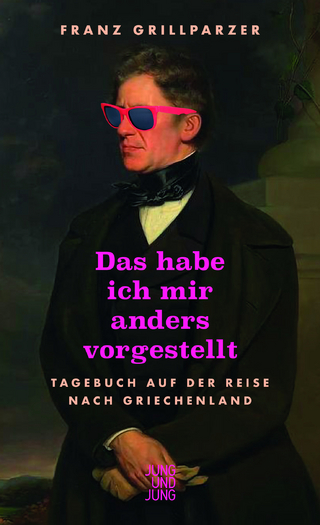
Tagebuch einer Reise in Inner-Arabien
2 Bände in 1 Band.
Seiten
2004
|
1. Leiden 1896 und 1914 Reprint: Hildesheim 2004. Zweiter Teil (1914) herausgegeben von Enno Littmann
Olms, Georg (Verlag)
978-3-487-12616-6 (ISBN)
Olms, Georg (Verlag)
978-3-487-12616-6 (ISBN)
- Keine Verlagsinformationen verfügbar
- Artikel merken
Der schwäbische Orientalist und spätere Straßburger Bibliotheksdirektor Julius Euting (1839–1913) brach im Mai 1883 gemeinsam mit den Franzosen Charles Huber zu einer mehr als einjährigen Expedition in Richtung Innerarabien auf, die ihn als Reiseschriftsteller und Orientforscher berühmt machte. Zweck dieser großen Reise, die mit Unterstützung des Königs von Württemberg und des Statthalters von Elsaß-Lothringen durchgeführt wurde, war es u.a., Spuren vorislamischer Geschichte in Gestalt von Inschriften und Denkmälern zu untersuchen.
Tatsächlich war Eutings Ausbeute beeindruckend: Er sammelte knapp eintausend Inschriften verschiedenster Provenienz, fand die altaramäische Stele von Teima aus dem 5. Jh. v. Chr., erforschte die semitische Schrift und brachte syrische Geräte mit. Auf seiner teilweise lebensgefährlichen Reise, die ihn bis nach Oberägypten führte, legte Euting etwa 2300 km zu Pferd und Kamel zurück. Die ethnologischen und geographischen Beobachtungen in seinem bedeutenden Tagebuch, dessen zweiter Teil postum von Enno Littmann herausgegeben wurde, vermitteln vor allem ein authentisches und eindrucksvolles Bild des alltäglichen Lebens der Fellachen des Niltals und Beduinen.
***************
The Swabian orientalist and later library director in Strasbourg, Julius Euting (1839–1913), set off in May 1883 with the Frenchman Charles Huber on an expedition to central Arabia which was to last more then a year and to make him famous as a travel writer and oriental explorer. One of the aims of this great journey, which was supported by the King of Württemberg and the Governor of Alsace-Lorraine, was to seek out traces of pre-Islamic history such as inscriptions and monuments.
Euting’s results were certainly impressive: he collected nearly a thousand inscriptions of various origins, discovered the 5th century BC Aramaic stele of Teima, researched the Semitic script and brought back Syrian utensils. On his sometimes perilous journey, which took him as far as Upper Egypt, Euting covered some 2300 km on horse- and camel-back. The significant ethnological and geographical observations in his diary, the second part of which was published posthumously by Enno Littmann, convey above all an authentic and impressive picture of everyday life among the Fellahin of the Nile Valley and the Bedouin.
Tatsächlich war Eutings Ausbeute beeindruckend: Er sammelte knapp eintausend Inschriften verschiedenster Provenienz, fand die altaramäische Stele von Teima aus dem 5. Jh. v. Chr., erforschte die semitische Schrift und brachte syrische Geräte mit. Auf seiner teilweise lebensgefährlichen Reise, die ihn bis nach Oberägypten führte, legte Euting etwa 2300 km zu Pferd und Kamel zurück. Die ethnologischen und geographischen Beobachtungen in seinem bedeutenden Tagebuch, dessen zweiter Teil postum von Enno Littmann herausgegeben wurde, vermitteln vor allem ein authentisches und eindrucksvolles Bild des alltäglichen Lebens der Fellachen des Niltals und Beduinen.
***************
The Swabian orientalist and later library director in Strasbourg, Julius Euting (1839–1913), set off in May 1883 with the Frenchman Charles Huber on an expedition to central Arabia which was to last more then a year and to make him famous as a travel writer and oriental explorer. One of the aims of this great journey, which was supported by the King of Württemberg and the Governor of Alsace-Lorraine, was to seek out traces of pre-Islamic history such as inscriptions and monuments.
Euting’s results were certainly impressive: he collected nearly a thousand inscriptions of various origins, discovered the 5th century BC Aramaic stele of Teima, researched the Semitic script and brought back Syrian utensils. On his sometimes perilous journey, which took him as far as Upper Egypt, Euting covered some 2300 km on horse- and camel-back. The significant ethnological and geographical observations in his diary, the second part of which was published posthumously by Enno Littmann, convey above all an authentic and impressive picture of everyday life among the Fellahin of the Nile Valley and the Bedouin.
| Reihe/Serie | Documenta Arabica, Teil 1: Reiseliteratur |
|---|---|
| Zusatzinfo | mit über 210 Abb. und 1 Übersichtskarte. |
| Sprache | deutsch |
| Gewicht | 1114 g |
| Themenwelt | Literatur ► Biografien / Erfahrungsberichte |
| Literatur ► Briefe / Tagebücher | |
| Reisen ► Reiseberichte ► Naher Osten | |
| Schlagworte | 19. Jahrhundert • Antike • Arabien, Geschichte; Reisebericht/Erlebnisbericht • Arabien, Geschichte; Reise-/Erlebnisberichte • Beduinen • Denkmal • Ethnologie • Expedition • FE • Fellachen • Geografie • Hardcover, Softcover / Reiseberichte, Reiseerzählungen/Naher Osten • HC/Reiseberichte, Reiseerzählungen/Naher Osten • Innerarabien • Inschriften • Julius Euting • Kultur • Niltal • Orientalist • Reise • Reisebericht • Reiseliteratur • Reiseschriftsteller • Semitisch • Syrien • vorislamische Geschichte |
| ISBN-10 | 3-487-12616-8 / 3487126168 |
| ISBN-13 | 978-3-487-12616-6 / 9783487126166 |
| Zustand | Neuware |
| Haben Sie eine Frage zum Produkt? |
Mehr entdecken
aus dem Bereich
aus dem Bereich
Tagebuch auf der Reise nach Griechenland
Buch (2023)
Jung u. Jung (Verlag)
16,00 €
Begegnungen in einem Land der Widersprüche | Von Dschidda bis Riad, …
Buch | Softcover (2024)
Malik (Verlag)
18,00 €


